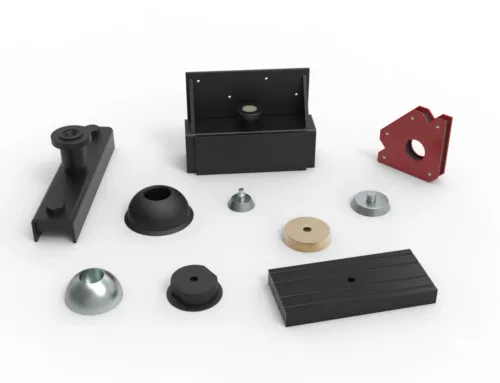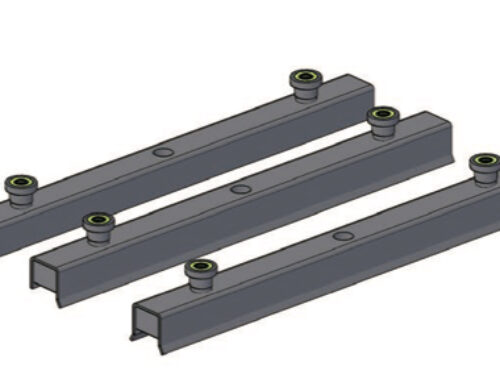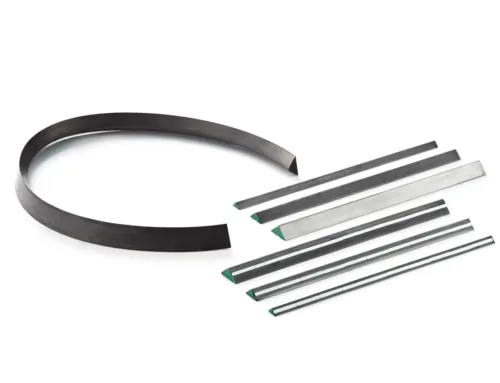Wondering how long neodymium magnets last before they start losing their power? You’re not alone. These incredibly strong magnets are used everywhere—from high-tech industries to everyday gadgets—but their lifespan isn’t infinite. The truth is, with the right care, a quality neodymium magnet can keep most of its strength for decades, yet certain factors like heat, corrosion, and physical damage can shorten that timeframe fast. In this guide, I’ll break down exactly what affects their durability, how to keep them performing at their peak, and when you might actually notice a drop in performance.
What Are Neodymium Magnets
If you’ve ever wondered why some magnets feel incredibly strong for their size, chances are you’ve come across a neodymium magnet. These are a type of rare earth magnet, made primarily from an alloy of neodymium, iron, and boron (NdFeB). This composition gives them their exceptional strength—many times stronger than common ferrite or ceramic magnets of the same size.
Neodymium magnets work by aligning the magnetic domains within the alloy in a fixed orientation during manufacturing. Once magnetized, they create a powerful and stable magnetic field, which makes them ideal for applications where high strength is needed in a compact form.
They’re preferred over other magnet types for a few key reasons:
- Unmatched strength-to-size ratio – They can lift hundreds or even thousands of times their own weight.
- Versatility – They can be manufactured in many shapes, sizes, and grades.
- Reliability – When protected from extreme temperatures and corrosion, they maintain their performance for years.
In real-world applications, neodymium magnets are everywhere—from industrial machinery and medical equipment to audio systems and electric motors. You’ll also find them in wind turbines, precision tools, and even simple household gadgets like magnetic clasps and phone mounts. In advanced technologies, they are a key component in high-efficiency motors and renewable energy systems, similar to those described in magnets in wind turbines.
They’ve become the magnet of choice for engineers, product designers, and hobbyists because they pack so much power into such a small package. And that’s exactly why understanding their durability and lifespan is so important for anyone who works with or relies on them.
Expected Lifespan of Neodymium Magnets
Under ideal conditions, neodymium magnets can keep most of their magnetic strength for over 20 years, and in many cases, even longer. Physically, the magnet itself can last decades if it’s not exposed to damaging environments, but its magnetic strength isn’t the same as physical longevity.
Neodymium magnets naturally lose a very small amount of strength over time — usually less than 1% per decade when kept in optimal storage conditions. This slow decay means that for most household, workshop, or industrial uses, you won’t notice a change in pull force for many years. However, exposure to extreme temperatures, corrosion, or strong opposing magnetic fields can speed up this decline.
Lifespan Breakdown Under Different Conditions:
| Condition | Average Magnetic Lifespan | Notes |
|---|---|---|
| Optimal – Room temp (68°F), low humidity, light handling | 20+ years | Less than 1% loss per decade |
| High Heat – Over 176°F regularly | 1–5 years | Rapid strength loss |
| Moist or Corrosive Environment (no coating) | Months to few years | Rust and pitting weaken magnet |
| Heavy Mechanical Stress | Varies | Cracking or chipping causes sudden failure |
Think of it this way — if you keep them clean, dry, and away from excess heat or force, neodymium magnets will hold their pull for decades. The biggest difference between “how long it lasts” and “how long it stays strong” is how you care for it.
Key Factors Affecting Neodymium Magnet Lifespan
Several things can shorten the lifespan of neodymium magnets or reduce their strength over time. Knowing what hurts them—and how to avoid it—will help you get the most out of them.
Temperature impact
Neodymium magnets are sensitive to heat. Most standard grades start losing strength permanently above 176°F (80°C). High-temperature grades can handle up to around 300°F (149°C), but anything beyond that risks permanent demagnetization. Cold temperatures usually aren’t an issue unless there’s a sudden change that causes mechanical stress.
Corrosion and moisture exposure
These magnets are prone to rust because their base material (NdFeB) corrodes quickly when exposed to moisture. In humid or salty environments, unprotected magnets can break down fast. That’s why they’re almost always coated—common options include nickel-copper-nickel plating, epoxy, or plastic.
Mechanical stress
Neodymium magnets are strong but brittle. A sharp impact, drop, or constant vibration can chip, crack, or even shatter them. Once damaged, their performance drops, and the break points corrode faster.
Magnetic interference and misuse
Placing magnets too close to other opposing magnetic fields, or storing them in a way that causes them to oppose each other, can weaken them over time. Strong electrical currents nearby can also alter their alignment and reduce strength.
Coating and plating quality
The type and quality of coating directly affect durability. Nickel or nickel-copper-nickel coatings work well for general use, while epoxy or Teflon coatings are better in wet or chemically harsh settings. A high-quality protective layer can add years to a magnet’s usable life.
Signs Your Neodymium Magnets Are Wearing Out
If you use neodymium magnets often, it’s worth knowing the warning signs that they’re starting to lose their edge. Catching issues early can save you from performance problems or even replacing them too soon.
Common signs to watch for:
- Weaker pull force – If the magnet isn’t holding items as securely as it used to, that’s a clear indicator of magnetic strength degradation.
- Visible corrosion or coating damage – Even with nickel, epoxy, or other protective coatings, scratches or chips that expose the metal core can lead to rust and faster decay.
- Temperature-related performance drops – Extreme heat or cold can temporarily or permanently reduce magnetic strength, especially if the magnet is exposed beyond its recommended operating range.
- Cracks or structural damage – Because neodymium magnets are brittle, any chips, fractures, or breaks can cause performance loss and increased risk of demagnetization.
Regularly checking for these signs can help you stay ahead of wear and tear, especially in applications where strong, consistent magnet performance matters.
How to Properly Maintain Neodymium Magnets to Extend Their Lifespan
Neodymium magnets can last for decades if you treat them right. A little care goes a long way in keeping their magnetic strength and preventing damage. Here’s what works best:
Best Storage Practices
- Keep them dry – Moisture is the biggest enemy, so store in a low-humidity area.
- Use spacers or keepers – These prevent magnets from slamming together and chipping.
- Avoid magnetic interference – Store away from strong opposing magnetic fields.
Inspection and Cleaning Tips
- Check regularly – Look for cracks, chips, or coating wear.
- Wipe gently – Use a soft, dry cloth; avoid water unless coating is guaranteed intact.
- No abrasive cleaners – They can scratch the protective plating and speed up corrosion.
Protective Coatings for Corrosive Environments
- Nickel-copper-nickel plating is common and works well indoors.
- For humid or marine environments, epoxy, plastic, or rubber coatings hold up better.
- If magnets will be embedded in equipment, consider sealing them in airtight housings.
Avoid Mechanical or Thermal Stress
- Don’t drop them – Neodymium magnets are brittle and can shatter on impact.
- Mind the temperature – Stay under 176°F (80°C) unless you have high-temp rated grades.
- Limit repeated impacts – Constant vibration or shock can weaken or chip the magnet.
Keeping them clean, coated, dry, and out of extreme conditions is the simplest way to make neodymium magnets last as long as they can.
Comparison with Other Magnet Types in Terms of Lifespan
When it comes to magnet durability, different types perform very differently. Here’s a quick breakdown of how neodymium magnets stack up against other common options in terms of lifespan, strength, and durability.
| Magnet Type | Typical Lifespan (optimal conditions) | Strength Level | Temperature Tolerance | Corrosion Resistance |
|---|---|---|---|---|
| Neodymium (NdFeB) | 20+ years | Very high | Moderate (up to ~176°F) | Low (needs coating) |
| Ferrite (Ceramic) | 50+ years | Low to medium | High (up to ~482°F) | Excellent |
| Alnico | 50+ years | Medium | Very high (up to ~1000°F) | Good |
| Samarium Cobalt (SmCo) | 20–30 years | High | Very high (up to ~572°F) | Excellent |
Neodymium vs Ferrite
- Ferrite lasts longer in years but is much weaker in magnetic pull.
- Ferrite handles heat and weather better without coatings.
- Neodymium offers 7–10 times the pull force in a much smaller size.
Neodymium vs Alnico
- Alnico is extremely heat-resistant but loses magnetism more easily if knocked or exposed to certain fields.
- Neodymium holds its strength much better under normal handling but can’t take extreme heat like Alnico.
Neodymium vs Samarium Cobalt
- Samarium Cobalt is more heat and corrosion resistant but costs significantly more.
- For most industrial and consumer uses, coated neodymium magnets give a better strength-to-price ratio while still lasting decades with proper care.
With the right coating and kept within safe temperature limits, neodymium magnets offer one of the best balances of strength, size efficiency, and lifespan you can get for both industrial and everyday use.
NBAEM Commitment to Quality and Durability
At NBAEM, we build neodymium magnets to last, using strict manufacturing standards that keep magnetic strength and durability high over time. Every magnet goes through precise quality checks to ensure it can handle real-world conditions, whether it’s for industrial machinery, electronics, medical tools, or everyday products.
We also offer customization options so your magnets can meet specific needs. This includes different coatings like nickel-copper-nickel, epoxy, or gold for better corrosion resistance, and materials rated for higher temperature tolerance so they hold up in demanding environments.
Our customers in the U.S. have shared success stories of magnets still performing at full strength even after years of heavy use in outdoor, marine, and manufacturing settings. That’s why we back our products with reliable support and warranty services, making sure you get both performance and peace of mind.
Frequently Asked Questions
Can neodymium magnets lose magnetism completely
Yes, they can, but it’s rare if you take care of them. Over decades, magnetic strength slowly drops, but extreme heat, strong opposing magnetic fields, or heavy physical damage can cause faster and even total loss of magnetism.
How do environmental factors speed up aging
High humidity, saltwater, or long-term outdoor exposure can lead to corrosion, especially if the coating is damaged. Once corrosion starts inside the magnet, it can quickly weaken the structure and reduce strength.
Ideal temperature range for storage
Store them in a cool, dry place between 50°F and 80°F. Avoid leaving them in hot cars, near ovens, or anywhere they could exceed their rated temperature (usually around 176°F for standard grades).
Are coated magnets more durable
Yes. Nickel, epoxy, or plastic coatings protect against rust and moisture damage. For marine or outdoor use, triple-layer nickel-copper-nickel or epoxy coatings work best.





Leave A Comment